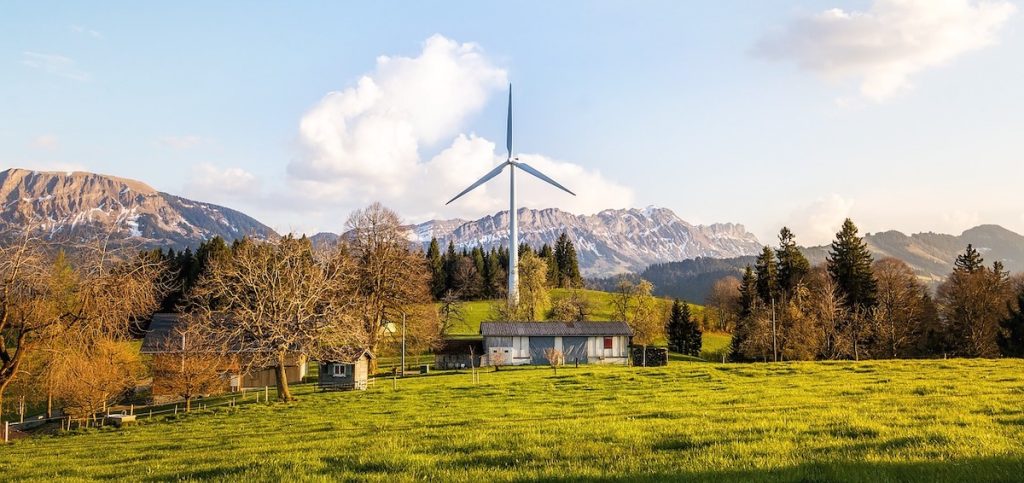The world population has reached more than 2.7 billion people as of 2021. The growth in population means an increase in energy consumption. The problem is that our primary source of energy mostly comes from finite resources such as oil, coal, natural gas and other forms of fossil fuels. Once we consume them, they can’t be replaced.
This dependency on non-renewable sources is damaging our food sources, climate and environment. Drilling, mining and burning these kinds of elements at a global scale bring harm to our planet and our health.
Although non-renewable energy sources have served their purpose for decades, we’re now facing two main problems:
- The limited supply of fossil fuels
- The severe impact of greenhouse gases and other chemicals produced from burning fossil fuels
However, there’s another type of energy source which is renewable energy. Unlike non-renewable energy, renewable energy sources can replenish themselves, which means that we have an unlimited supply of these types of resources.
What is Renewable Energy?

Renewable energy is energy taken from resources that can naturally replenish themselves, making these types of energy inexhaustible. Some examples are solar, wind and geothermal energy.
With renewable energy, the time it takes to replenish the resource is taken into consideration. It should be quicker than the rate at which the energy is used. This means that natural sources like coal and oil aren’t considered renewable.
We are at a time where technology can now help us transition toward renewable energy. Although we still have a long way to go, the big corporations and a number of countries around the world are working toward commercializing renewable energy.
If scientists and engineers successfully find a way to get this resource efficiently into more homes, then this will be a cheaper and more environment-friendly alternative to what the majority of us are using today.
Renewable Energy Solutions for Your Home
Renewable energy or clean energy provides sustainability and security for everyone. Though not yet highly commercialized, it’s available for anyone who wants to start their transition to clean and renewable energy.
Here are renewable energy solutions that you can use to power your home.
1. Solar Energy

Solar energy comes from the solar radiation emitted by the sun. The sun’s energy has provided life to millions of life forms on earth and is one of the most important sources of energy. This is why solar energy is one of the most popular alternatives to fossil fuels.
Energy from the sun can be harnessed using a range of technologies like solar photovoltaic (solar panels), solar thermal energy, and solar heating.
Aside from installing solar panels in your home, you can also implement the following solar applications.
- Solar water heating
Water heaters are one of the biggest electricity hogs in your home. The good thing is that aside from solar panels that can generate electricity, you can also install a solar water heater to heat the water directly. You can use it in your shower, laundry, or kitchen use.
- Outdoor lighting
Outdoor lighting might be one of the easiest ways to use solar energy in your home. You can order solar-powered lights online and install them in your garden, garage, or yard.
These lights tend to charge during the day and automatically turn on during the night. The good thing is that they are sold in an array of decorative designs.
- Solar chargers
Another way to use solar energy is through solar chargers. If you have yet to have solar panels installed, then solar chargers are an inexpensive way to incorporate clean energy into your life.
- Solar-powered oven
Even if you have solar panels installed, a solar oven would be a good investment. You can use it whether you’re at home or away. There are more advanced solar power ovens available in the market that can heat up to 400F. Solar-powered ovens are handy and cost-effective appliances that you’d surely utilize more than you’d expect.
2. Hydroelectric Energy

Hydroelectric energy uses water-in-motion to generate electricity. Examples of water sources include waterfalls and windmills.
Hydroelectric energy works by converting potential energy into kinetic energy. For this, you need a hydroelectric power plant, or something similar to it, that will serve as a reservoir for the water, then you’ll need a valve or gate to monitor how much water flows out of the reservoir.
You’ll also need to have a place where the water will end up after it flows downwards, which allows it to gain potential energy.
There are three types of hydroelectric power plants used to harness energy from flowing water.
- Impoundment facility. Here, a dam is used to store and control the flow of water.
- Diversion facility. Unlike the impoundment facility, the method used in this facility doesn’t require a dam. Instead, it uses multiple canals to channel water toward turbines that then generate electricity.
- Pumped water facility. This type of facility stores energy by pumping water from a lower reservoir, to a more elevated location. When there’s a demand for electricity, water located uphill is released, and as it flows back down, it turns a turbine to release more electricity.
Is hydroelectric power for you?
Using this energy source could depend on where you live as it’s very site specific. You’ll need to have access to a suitable resource and have someone who’s certified to install the system.
If there’s a good water source nearby, it might be an excellent move to develop it as a community, rather than thinking about supplying just one home.
Once installed, it can last for up to 50 years with low maintenance costs, and could last longer if well-maintained.
3. Geothermal Energy

Geothermal energy utilizes power from the heat emitted by the Earth. If you were to dig down into the ground, you would notice the temperature getting hotter as you go deeper, and that’s what forms geothermal energy.
Geothermal energy can be harnessed through:
- Geothermal power plants. With geothermal power plants, wells are drilled up tp 2 miles deep into the Earth to generate steam that creates electricity.
- Geothermal heat pumps. The geothermal heat pump system transfer heat by pumping water below the Earth’s surface through pipes. This method can power up heating and cooling systems at home so it makes it a more suitable option for home usage.
4. Wind Energy

Wind energy uses the power of the wind to generate electricity. Generally, wind energy comes from wind turbines.
These turbines convert the wind’s kinetic energy into electricity. When the wind blows, the blades of the turbine are pushed around a rotor that then produces the electricity that’s transmitted to the National Grid.
Wind turbines are growing as sources of renewable energy for large corporations worldwide.
Some of these companies are Mitsubishi Heavy Industries (Japan), GE Renewable Energy (America), Siemens (Germany), and Vestas (Denmark).
Wind is a powerful source of renewable energy and it’s readily available whether it’s on land or water.
To give you an idea of how powerful wind energy is, one (1) megawatt can provide electricity for about 330 average-sized houses for an hour. An average wind turbine can generate enough energy in 94 minutes to provide electricity for an average household for a month.
The disadvantage is that it takes up a lot of space, and could generate a lot of noise. But, if you live in an area where wind turbines are allowed and you’re not bothered by the noise, you’ll certainly benefit from this option. Depending on where you live, this might be a better choice than solar energy.
The Fossil Fuel Problem

Many companies and government bodies around the world are actively pursuing the transition to renewable energy because of the current fossil fuel problem.
Fossil fuels have helped our civilization become what it is today and have served its purpose. But it came with a price. The harmful chemicals that it left behind have severely impacted our environment, health, and may even cost us our habitat.
From land degradation, water pollution and toxic air pollution, our planet will have a difficult time recovering from these side effects.
Another problem caused by burning fossil fuels is the large amounts of harmful gases they release into the atmosphere.
Carbon dioxide is the biggest culprit of them all as it causes high temperatures that destroys the balance of the planet. These high temperatures are not just endangering the lives of species but melting the ice in the Arctic and Antarctic as well, resulting in the rise of sea levels. These abnormal changes will affect all of us as it can lead to floods, droughts, earthquakes and other natural calamities.
The Future Depends on Renewable Energy Solutions

Fossil fuels have helped us reach the point where we can develop technologies that will allow us to use renewable energy solutions.
Renewable energy is the future. For one, it’s inexhaustible, infinite. What you can do today is to slowly incorporate renewable energy solutions into your daily life. From solar powered lights, to solar powered chargers. Taking one baby step at a time is better than not doing anything at all.
There are many resources about renewable energy that you can read up on to learn more about what best applies to your lifestyle and area.
You don’t have to be an environmentalist to care about our rapidly depleting environment. We only have one planet, there’s no “Planet B,” so taking care of it should be our top priority, not only for ourselves but for the future generations as well.






